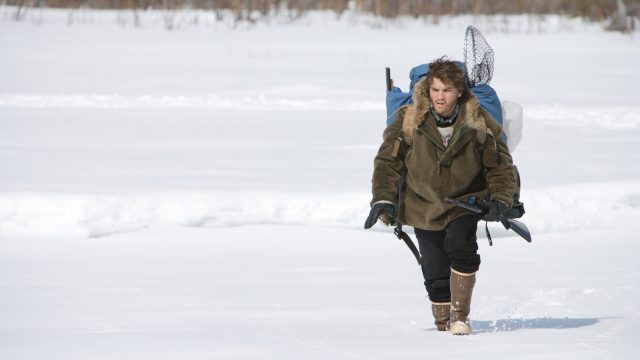Christopher McCandless died of starvation in the Alaskan wilderness in the summer of 1992.* Depending on who tells the story, he was a Tolstoyian figure who gave up a life of privilege to live closer to people and to nature, someone who never could find a way in to any kind of society, or just an arrogant young man too stupid to realize what he was up against when he walked into Alaska alone. (This last view is held by a lot of Alaskans.) The strength of Jon Krakauer’s book Into the Wild is that it honors all the versions of McCandless. It’s an extended journalistic dive in the people who knew him, with long interviews and stories about McCandless that never come down to a single truth. (Krakauer also adds some of his own experiences of climbing and life alone in the wild, which come off more than anything else as trying to make his contracted word count. He would do a lot better with his next book, Into Thin Air, because he was actually part of the story he tells.)
The best description of the difference between Krakauer’s book and Sean Penn’s film still comes from Tasha Robinson: “Krakauer’s book is an examination of McCandless’ life and death. Penn’s movie is an enthusiastic celebration of it.” As a director, Penn has never been much for just sitting back and letting the story tell itself, and he goes all Scorsese or even Oliver Stone here: text that fills the screen, fourth-wall breaks, fantasy sequences, and a big, broad performance from Emile Hirsch as McCandless. The thing is (and this is Tasha’s point too), on its own terms, it works. Penn and Hirsch make this version of McCandless never less than believable and occasionally compelling. He’s idealistic, optimistic, and more easily influenced than he thinks he is, someone with intelligence but not perspective–that is, a guy in his early twenties. (The songs by Eddie Vedder are a perfect touch here: you just know this McCandless is a big Pearl Jam fan.) Penn also loads the movie with a great supporting cast; just about every member makes a big impact with a scene or two. Hal Holbrook, Vince Vaughn, and a just-pre-Twilight Kristen Stewart are the standouts. You feel the emotional pull of these characters, and it hurts that McCandless doesn’t. As he succumbs to his failing body in the final scenes, Penn aims for a Malickian sense of slipping between two worlds. He almost gets there.
Krakauer describes the different views of McCandless; Penn, by trying to go so far into his headspace, allows viewers to feel it. My impression was that reaction was about as divided to the film as to the book, and that counts as a success.
Into the Wild streams free on Amazon Prime.
*One of the more controversial aspects of both book and film has been Krakauer’s reconstruction of exactly what killed McCandless. He has since partially backed off from the theory he advanced in the book, with the full details of his current theory here; he still thinks McCandless inadvertently poisoned himself, just with a different poison. A theme that goes through Into the Wild and especially Into Thin Air, though, is just how marginal life is in this kind of extreme situation, where all it takes is a change in the weather of a few hours or days to make the difference between life and death.

